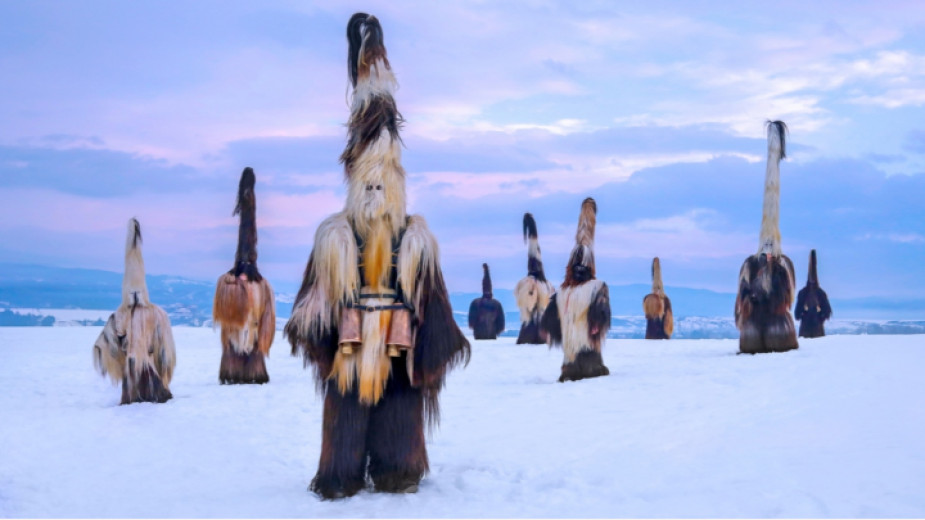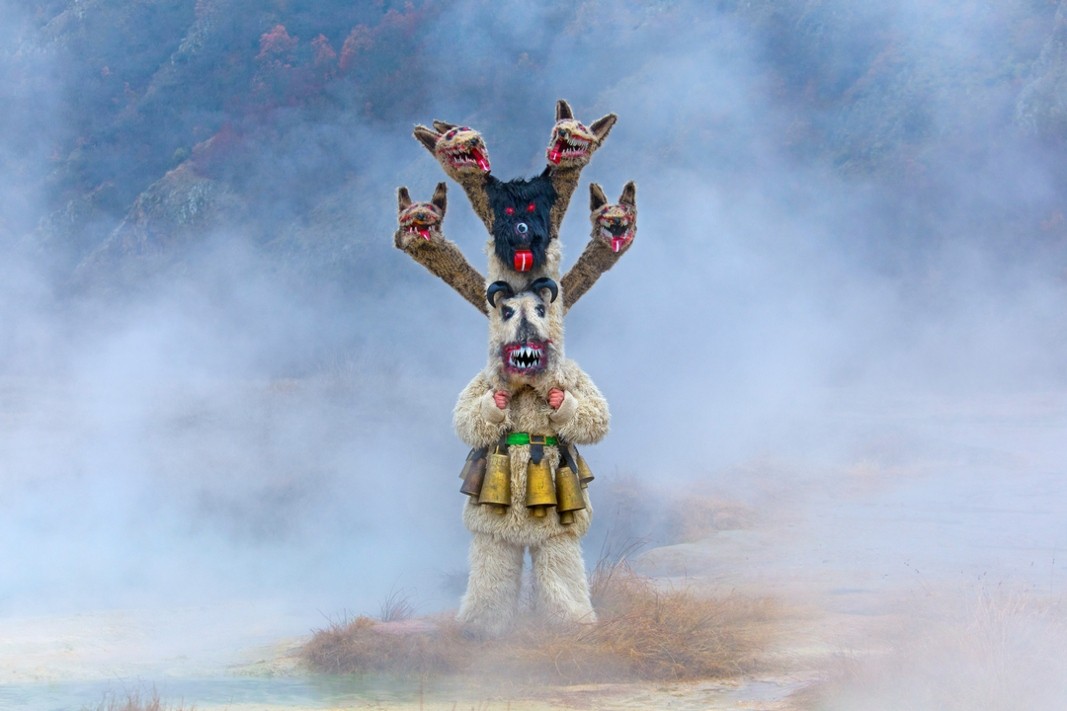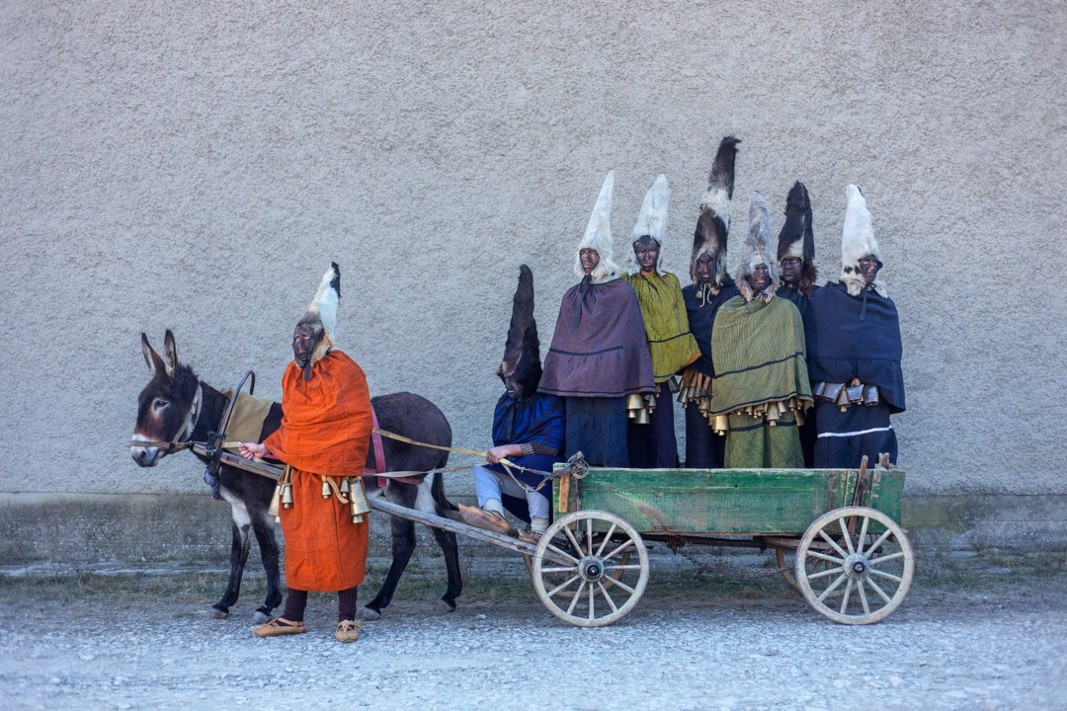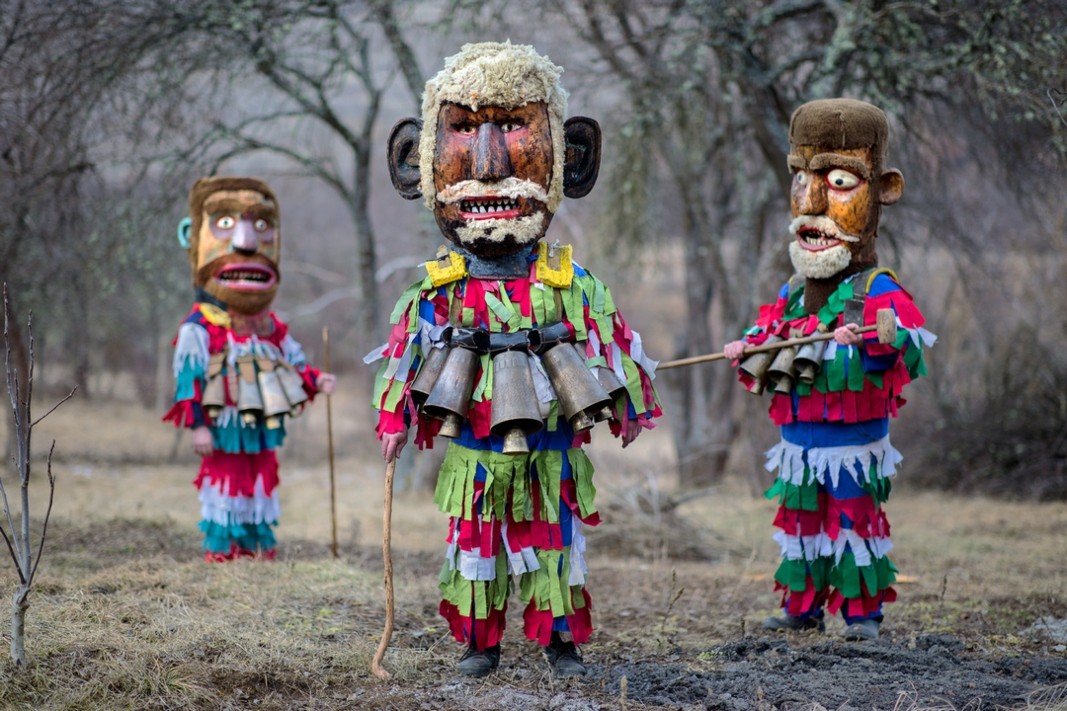 10
10
Shortly after the euphoria around the Christmas and New Year’s celebrations in Bulgaria, it is now time for the processions of masked dancers. Bulgaria’s kukeri dancers (mummers) dress in costumes made of animal hair, don scary masks and belts with oversized bells and travel across the country to drive away evil spirits. This is one of the most mystical Bulgarian customs, and the most colorful one! Bulgarian photographer Evo Danchev, who has worked for National Geographic for years, has dedicated a special project to Bulgaria’s kukeri called “Guardians”. His artistic photograph of kukeri from the town of Razlog called Chaushi shines on the cover of the January issue of the popular magazine. Who are these people? Evo Danchev has more:
“Masquerade rites in Bulgaria are represented by different groups bearing different names. For instance, in the town of Pernik they are called survakari. In Razlog they are known as babugeri and chausi. In Eastern Bulgaria people call them kukeri. There are also dzhumali, arapi, dervishi and mechkari. I’ve photographed almost all kinds of mummers in Bulgaria”

Ivo's chaushi caused a true furor among the readers of National Geographic. The photo has an interesting story. It was shot in the Pirin Mountain at an altitude of 2,810 meters above sea level near the karst ridge "Koncheto" which is close to Vihren (2,914 m), the tallest peak in the Pirin Mountain.
"I decided to do something different- to take photos of the chaushi high in the mountain," said Evo. “We had only a few days before the first snow and we had to organize ourselves very quickly. Six friends came with me. Loaded with kukeri costumes and masks like sherpas, we climbed up and shot a session. The photo on the magazine’s cover was taken there”, says Evo. He claims that mummers have always attracted him with their primitiveness and the energy they carry. That is why he dedicated the "Guardians” project to them.
Have a look at the gallery to see footage of the “Guardians” project, courtesy of Evo Danchev below.
“I wondered where to start and how to photograph them so that the whole thing does not look like an ordinary mummers parade held on the streets of the cities we all got used to”, Evo noted.

Evo contends that nature has always been chief motif in his photos. That is why he decided to photograph his characters in the wild. “I want to bring these creatures back to where they came from, to look for different places and plots that make us feel like we are in a fairy tale or in a magical world, and not just to document a tradition”, explains Evo. The photographer started the “Guardians” project two years ago. He travels across Bulgaria to take photos. So far, he has collected dozens of unique photographs.

Evo Danchev intends to publish a book with portraits of kukeri dancers and their bizarre varieties. He admits that he has always loved to tell human stories. The faces of most of his characters are chiseled by the sun and the winds. “I have always liked people who are connected with nature”, says Evo. That is why he is so passionate about his project. “Mummers are guardians of an ancient tradition. I try to follow the stories of the people hidden behind these scary masks. My project has two sides - human and magical”, concludes Evo.
English version: Kostadin Atanasov
Photos: courtesy of Evo DanchevIn the middle of August in Kyustendil, Southwestern Bulgaria, the "Panagia - Raising of the Bread" holiday takes place. The holiday is directly related to the church holiday "Assumption of the Blessed Virgin Mary", marked on August..
A three-day embroidery festival takes place in the square of the village of Vardim near Svishtov, the organizers reported. At its core, the festival promotes a particularly colorful part of our lifestyle and traditions -..
Fans of Bulgarian folklore are getting together in the village of Ribaritsa near Teteven on 20 and 21 July for the 3 rd national festival and the 16 th edition of the festival of folklore of national customs and authentic traditional costumes in a..

+359 2 9336 661
